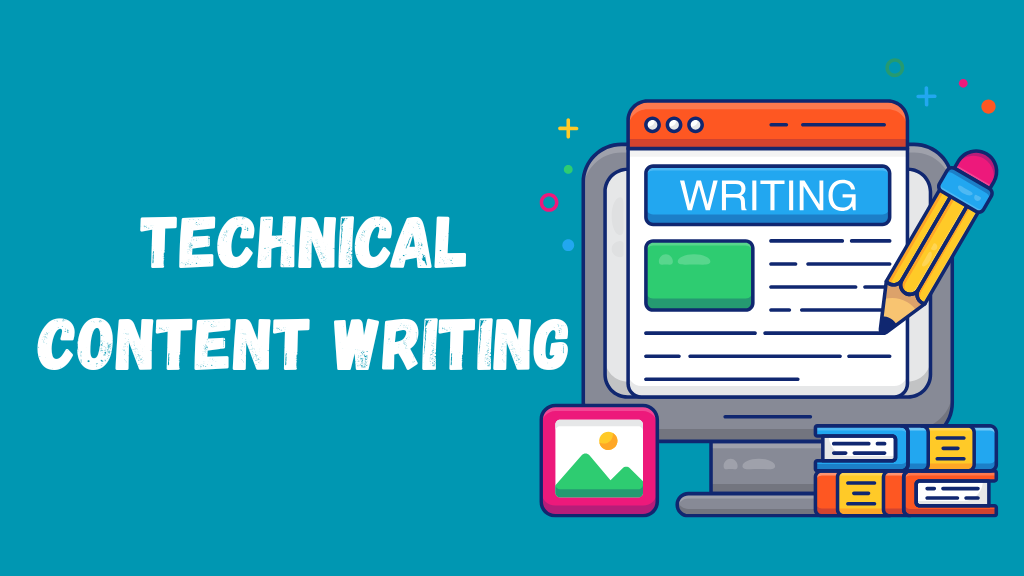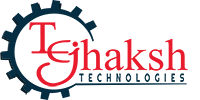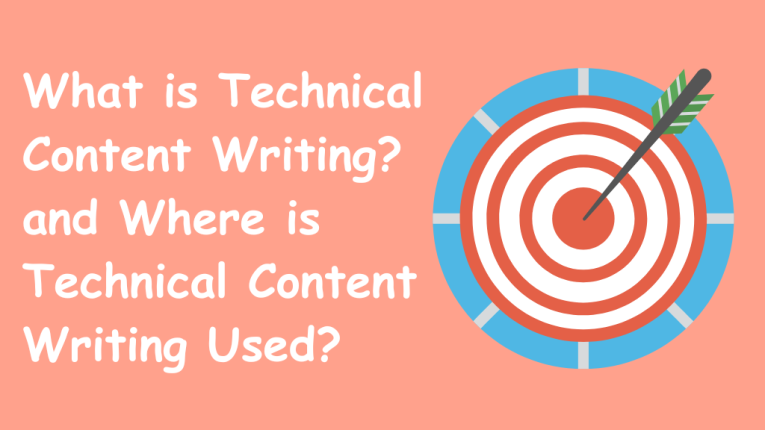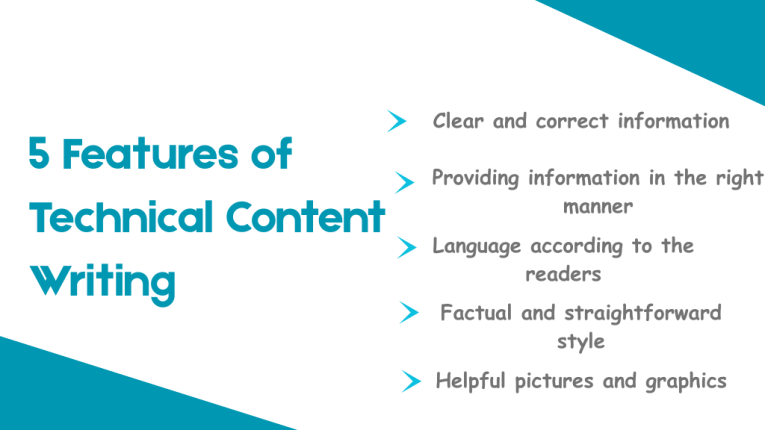
- July 25, 2025
- Tejhaksh
- 0 Comments
- Content marketing, Content writing, Uncategorized
What is Technical Content Writing? A Beginner’s Guide to Mastering Tech Writing
In today’s time, when everything is based on information, it’s increasingly important to communicate clearly and simply—especially when we talk about technical topics. Technical writing plays a vital role here.
Whether you’re a new writer, a business owner, or a tech professional who wants to explain complex things to people in simple terms—it’s beneficial for you to understand technical writing.
We’ll cover what technical writing is, what it’s all about, how technical SEO works, and how it can help you improve your work. It’ll also offer tips for beginners and informative content for professionals.
What is Technical Content Writing?
Technical content writing focuses on simplifying complex technical details for better understanding.
The goal is to explain things like software, machines, medical treatments, or engineering concepts in simple language that regular users can easily understand. It includes documents, guides, manuals, or step-by-step instructions.
Simply put, technical writing acts as a bridge between those people (such as engineers, developers or scientists) and common users (such as customers or other professionals). Its purpose is not only to provide information, but also to give proper directions, help people and solve their problems.
Where is Technical Content Writing Used?
Technical writing is used across many fields to clearly and simply explain complicated information. These are some of the main sectors:
- Information Technology: This includes software guides, coding tutorials, API documentation, and system design information.
- Engineering: Documents such as machine or equipment usage guides, operation procedures, and maintenance manuals are created.
- Healthcare: This includes instructions for use of medicines, information about medical devices, and documents related to clinical research.
- Finance and Legal: This includes documents that explain company policies, regulations, and legal processes.
Technical writers are very important in all these fields because the information written by them is accurate, as per the rules and useful for the common people.
Key Objectives of Technical Writing:
- Clarity: The article should be such that even common people can easily understand the technical things.
- Accuracy: All the information should be correct and updated.
- Structure: Content should be organized logically to ensure clarity and easy understanding.
- Usefulness: After reading the article, the reader should find it easy to understand a system or do some work.
- Efficiency: Avoid unnecessary things or heavy words, so that both the writer and the reader save time.
Features of Technical Content Writing
The biggest feature of technical writing is that it gives clear, understandable and useful information. In this, things are explained in a direct and precise manner. Let’s know some of its main points:
1. Clear and correct information
Its biggest purpose is to explain even difficult things in an easy and correct way. Writers try to make the language very easy and explain the matter directly. Unnecessary heavy words are avoided.
2. Providing information in the right manner
The information is divided in such a way that the reader can understand it quickly and easily. For this, headings, bullet points or lists are used according to the topic.
3. Language according to the readers
The language and information are changed according to the people who are reading the article. For example, if an engineer is reading, then the language can be a little technical, but if a common user is reading, then everything will be written in very simple language.
4. Factual and straightforward style
In technical articles, the author does not give his opinion, but only gives the necessary information, instructions and steps. Here, factual accuracy takes precedence over emotional responses.
5. Helpful pictures and graphics
Where necessary, screenshots, diagrams, charts and tables are used to make complex things easier to understand. This eliminates the need for long discussions.
Best Way to Understand Technical Content Writing
The best way to learn technical writing is to read a little and try to write a little yourself. It is a skill that gradually improves with practice. Below are some easy ways to learn it well:
1. Read and understand real examples
Reading already existing material helps a lot to learn technical writing. Such as:
- User manual of mobile or laptop
- Guide on how to install an app
- FAQ or Help section given on websites
- Blogs or documents related to software
See how the information is given in these, how is the language, how the headings and steps are made, and whether any photos or diagrams have also been added.
2. Practice writing small guides yourself
The best way to learn is to start writing.
Write a guide on a simple topic, such as:
“How to download the Zoom app on your phone”
“How to connect a printer to Wi-Fi”
“How to change your Facebook password”
This will help you learn how to give accurate information in simple language and how to write step-by-step instructions.
3. Get feedback from others
After you finish writing something, share it with a friend, teacher, or even an online group. Ask them if your message was clear or if anything was confusing. Their suggestions will help you improve your writing skills.
4. Know who you are writing for
- In technical writing, it is very important that you understand who your reader is.
- If you are writing for a tech expert (such as an engineer or developer), you can use a little technical language.
But if your reader is a layperson who does not know much about technology, you should use simple language and provide clear instructions.
Prominent Examples of Technical Writing
Technical writing is used in many fields where it is important to make things simple and understandable. Below are some common examples that show where technical writing is used:
- User manuals are written for how to use an electronic device or software.
- To provide information about the use or use of a software – such as a README file or API document on GitHub.
- An installation guide helps users set up hardware or an application.
- A white paper or case study is prepared to explain a technical subject in detail.
- SOPs are used in hospitals or factories to make sure that every task is done in the same proper way every time.
These examples show that the goal of technical writing is to explain things clearly so that readers can understand and follow them without any trouble.
Technical Writers’ Responsibilities and Job Duties
The job of a technical writer is to make difficult and complex information easy and understandable. They create content that even common people can easily understand. Their main responsibilities are as follows:
- First do thorough research on a technical topic.
- Write and improve user manuals, FAQs, guides, and other important documents.
- Work closely with engineers, developers, and designers to provide the right information.
- Create documents using tools like MS Word, Markdown, Confluence, or Adobe FrameMaker.
- As a product changes or is updated, keep updating the content as well.
In this way, technical writers help users so that they can understand and use any technical product or system correctly.
Technical Content Writers
Technical content writers are special professionals who explain any technical information in simple language. Their job is to help people who do not know much about technology but want to use a product or system.
How are they different from ordinary writers?
- Ordinary writers usually write blogs, advertising lines or social media posts. But technical writers do something different –
- They write information that helps in operating, using or understanding something.
- Their writing is very clean, straightforward and full of information, in which something is explained step-by-step.
So the job of a technical writer is not just to write, but to make complex things easy and understandable.
Different Types of Technical Writing
Technical writing isn’t limited to just manuals or guides — it encompasses a wide range of documents that serve different audiences and purposes. Each type of technical content has its own format, tone, and use case. Let’s take a detailed look at the key categories of technical writing.
1. End-User Documentation
Ensuring consistency and quality within an organization depends greatly on clear SOPs and internal documents. It is created for non-technical or general users to help them understand and use a product, software, or system effectively.
- Common Formats:
- User manuals
- Product guides
- How-to tutorials
- Quick-start guides
- Troubleshooting instructions
2. Technical Reports
Technical reports are formal documents that present data, research findings, testing results, or technical evaluations. These are used mostly in research institutions, engineering projects, and scientific settings.
- Common Formats:
- Feasibility reports
- Lab test reports
- Project status summaries
- Engineering design reports
3. API Documentation
API (Application Programming Interface) documentation is written primarily for developers and programmers. It explains how to integrate, connect, or use a software service or system.
- Common Elements:
- Code snippets and examples
- Authentication procedures
- Endpoint descriptions
- Error codes and responses
4. Standard Operating Procedures (SOPs) & Internal Documentation
Standard Operating Procedures and internal documents play a key role in ensuring organizational consistency and quality. They provide step-by-step instructions for employees to perform tasks safely and correctly.
- Common Uses:
- Manufacturing processes
- Safety protocols
- HR onboarding procedures
- IT troubleshooting workflows
5. Whitepapers and Industry Reports
These are more formal and persuasive in tone and are often used to highlight solutions, industry trends, or thought leadership. Whitepapers combine technical accuracy with a narrative style.
- Common Goals:
- Educate readers on a complex topic
- Present a new technology or solution
- Generate leads in B2B marketing
6. Online Help Systems
Online help content is integrated directly into software platforms or websites and provides on-demand support for users. It includes tooltips, FAQs, in-app guides, and searchable help centers.
Features:
- Interactive UI elements
- Step-by-step popups or walkthroughs
- Embedded help articles or videos
Difference Between Content Writing and Technical Writing
Purpose
- Content writing aims to educate, engage, or persuade people by sharing useful information about a product, service, or idea.
- Technical writing helps break down complicated concepts into clear and understandable language.
Writing Style
- Content writing uses a tone that is engaging, relatable, and appealing to the readers.
- Technical writing uses a formal, accurate, and informative tone.
Target Audience
- Content writing is for common people or internet users.
- Technical writing is for special people, such as engineers, developers, technical staff or internal teams of the company.
Common Examples
- Content Writing includes creating blogs, articles, social media updates, advertisements, and website text.
- Technical Writing: User Manual (Usage Guide), API Document, SOP (Process of Working), Whitepaper, Technical Guide.
Main Difference
- Technical writing is very specific and organized and requires technical knowledge or expertise.
- Content writing is more creative, flexible and aims to connect with people.
Benefits of Technical Content Writing
These are some basic and widely recognized advantages of investing in technical writing:
1. Easy understanding for users
When a product comes with a clean and easy-to-understand guide or manual, it becomes very easy to understand and use. This makes the customer less hassle-free and more satisfied.
2. Lack of customer support
If the documentation (e.g. FAQs, setup guides, step-by-step solutions) is already available, customers do not have to call customer support again and again. This saves the company time and money.
3. Builds a good brand image
If your company’s technical content is professional, clean and easy to understand, people consider your company a trustworthy and knowledgeable brand. This strengthens the company’s image.
4. Helps in training employees quickly
If you have SOPs (Standard Operating Procedures), training manuals or guides ready, new employees can learn the work quickly and well. This ensures that everyone works in the same way and training takes less time.
5. Google ranking and marketing benefits
If you post technical guides, tutorials or informative content on your website, search engines like Google like them. This brings more people to your site and increases the company’s recognition.
Technical Content Writing Tools
Technical writers use certain tools to create clean and effective content, which makes their work easier and better. These tools help in the following ways:
1. Markdown Editor
Like VS Code and Typora – These help in writing and formatting text in a clean manner.
2. Documentation Platforms
Like Confluence and Read the Docs – These are used to store and share documents.
3. Word Processor
Like MS Word and Google Docs – These are usually used to write, edit and format text.
4. Diagram Tools
Like Lucidchart and Draw.io – These tools are useful when something needs to be explained through a diagram.
5. Content Management Systems
Like WordPress and Drupal – These help to manage and publish content on the website.
6. Version Control Tools
Like Git and GitHub – When multiple people work on a document simultaneously, these tools help to track changes and maintain coordination.
Result:
All these tools help technical writers a lot in writing content, making it beautiful and publishing it at the right place. This makes their work faster, easier and more professional.
Strategies for Effective Technical Content Writing
Here are a few basic suggestions to improve your technical writing:
1. Understand your audience
Before writing anything, think about who it is for – new learners, experienced users, developers or people from your team. Change the language and tone accordingly. For example, if you are writing for the general public, make it very simple and understandable.
2. Plan ahead
Before you start writing, decide what to include. Make a simple outline in which the topic, title and points are clearly written. This will keep the writing clean and organized.
3. Use simple language
Do not use very complex technical words. Choose straightforward and easy-to-understand language for better clarity. If you need to use technical terms, be sure to explain their meaning too.
4. Add pictures and examples
If you have to explain a process, do not explain it only in words – also add screenshots, charts, diagrams or infographics. This makes things understandable quickly and readers remember them for a longer time.
5. Update your information
Technical things change quickly, as do new features in software. So check your content from time to time and update it if needed.
6. Check after writing
Read your article carefully—check if there are any mistakes or if there is something that no one understands. It is better if you give it to someone to read who is not familiar with the subject. This will help you know whether your point is understood correctly or not.
With these simple tips, your technical writing will become clearer, more effective and useful.
Importance of Technical Writing for Business Success
Technical writing plays an important role in every technical or professional business. It supports business growth and helps create stronger connections with customers.
- It enables customers to gain a clear understanding of your product and build trust in it.
- It simplifies the training process for new employees and helps integrate them into the organization.
- It helps comply with regulations in fields like healthcare or finance.
- It creates clear and accurate communication between different departments of your company and customers.
- If technical writing is done well, it acts as a strong sales and customer support tool without saying a word.
Final Thoughts
Technical writing is a skill that makes technical things easy for common people. If you are writing information about a software, explaining how to use it to people, or explaining complex things of a company in simple words — then you are working as a technical writer.
Doing this work helps people understand things quickly, builds trust and also leads to company growth.
If you are starting to become a technical writer or creating informative content for your business, then always keep 3 things in mind:
- Your language should be clear and easy
- The information should be in a correct order
- The content should be keeping in mind the people who are going to read it
If you keep these things in mind, then you can become a good and effective technical writer.





Leave a Comment